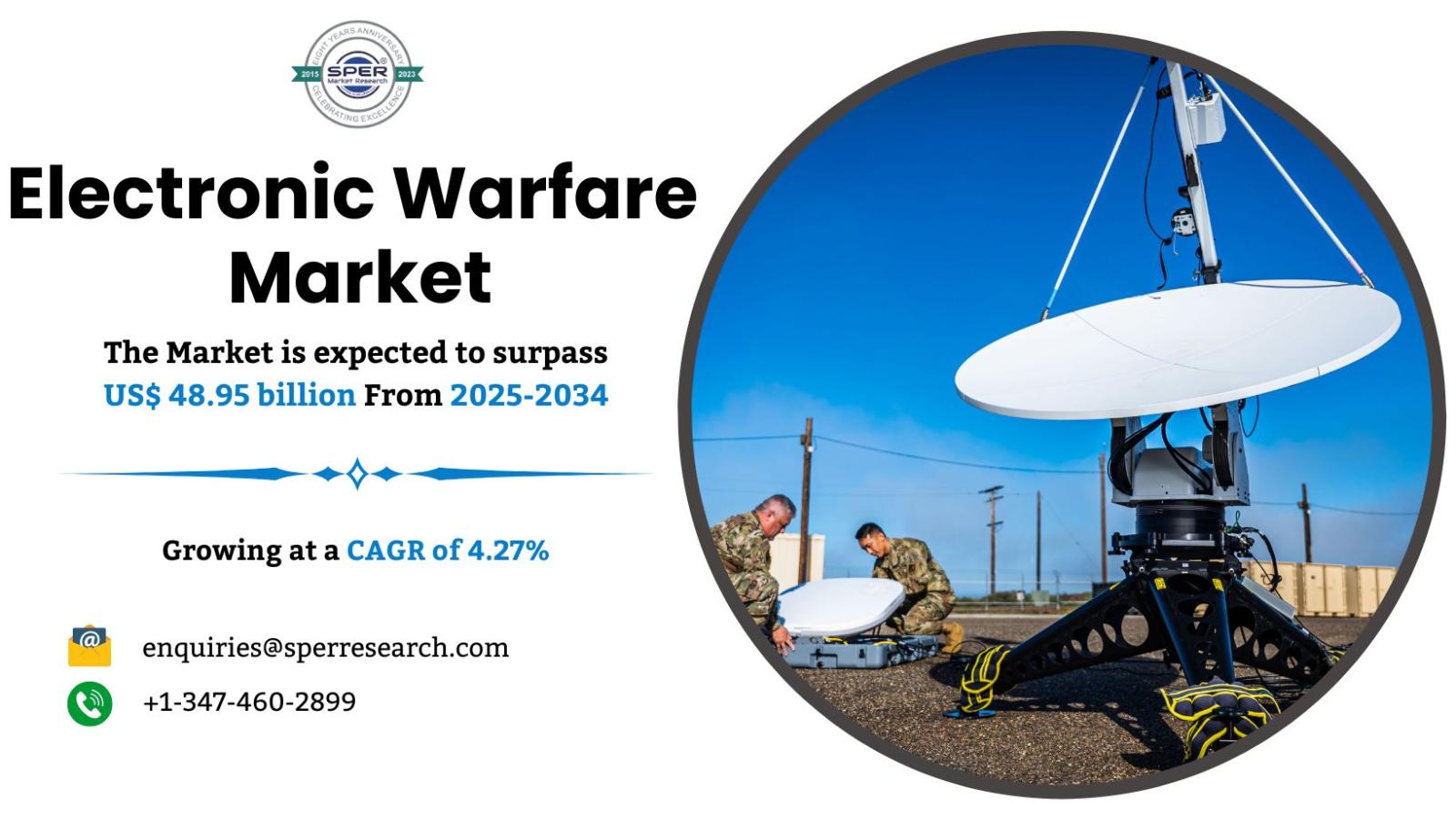Notifications

4 minutes, 34 seconds
-180 Views 0 Comments 0 Likes 0 Reviews

Electronic warfare refers to military activities that use the electromagnetic spectrum and accompanying technology, such as infrared (IR) detectors and radars, to intercept attacks and defend allied soldiers. This strategic strategy employs jammers, decoys, countermeasure systems, and directed energy weapons to improve range, spectral domain, security, environmental awareness, and decision-making support. Armed forces use electronic warfare extensively to provide intelligence and combat solutions, including threat detection, analysis, interruption, and localisation. As a result, electronic warfare systems are widely used across naval, ground, space, and aerial platforms.
According to SPER market research, ‘Global Electronic Warfare Market Size- By Platform, By Product, By Frequency, By End-User - Regional Outlook, Competitive Strategies and Segment Forecast to 2034’ state that the Global Electronic Warfare Market is predicted to reach 48.95 billion by 2034 with a CAGR of 4.27%.
Drivers:
The global electronic warfare (EW) market is growing mainly due to rising geopolitical tensions and defense modernization efforts. Increased funding for research and development (R&D) leads to innovation in EW technologies, especially in quantum computing and artificial intelligence (AI) for electronic attack (EA), electronic protection (EP), and electronic support (ES). The use of machine learning for real-time threat analysis shows significant technological progress. Cognitive electronic warfare systems, using AI for automated threat detection and response, highlight the shift towards more advanced EW solutions.
Request a Free Sample Report: https://www.sperresearch.com/report-store/electronic-warfare-market?sample=1
Restraints:
Electronic warfare systems provide considerable hurdles due to their inherent complexity and interoperability issues. These systems require complicated technology, various capabilities, and integration issues, making the design, development, and deployment processes extremely complex. To successfully negotiate these difficulties, specialised skills, large resources, and coordination among various parties are required. Furthermore, interoperability challenges develop when electronic warfare systems from several vendors use proprietary designs, protocols, and interfaces. Seamless communication and coordination among various electronic warfare systems and platforms are critical for maximising their efficacy in combined military operations.
The growth of the electronic warfare (EW) market in North America is mainly due to significant investments in defense capabilities to counter emerging threats and maintain technological superiority. The U. S. Department of Defense prioritizes EW for national security and focuses on research and development of advanced EW systems. This includes technologies for electronic attack (EA), electronic protection (EP), and electronic support (ES). There is a strategic shift toward integrating cyber warfare with traditional EW, and collaborations with defense contractors and advancements in software-defined radio, AI, and machine learning support the region's EW market growth. Some of the key market players are BAE Systems, Boeing Company, Elbit Systems Ltd, Harris Corporation, L3Harris Technologies, Inc, Lockheed Martin Corporation, and others.
For More Information, refer to below link: –
Related Reports:
Follow Us –
LinkedIn | Instagram | Facebook | Twitter
Contact Us:
Sara Lopes, Business Consultant — USA
SPER Market Research
enquiries@sperresearch.com
+1–347–460–2899
Electronic Warfare Market Electronic Warfare Market Share Electronic Warfare Market Size Electronic Warfare Market Growth Electronic Warfare Market Demand Electronic Warfare Market Growing CAGR Electronic Warfare Market CAGR Status Electronic Warfare Market Challenges Electronic Warfare Market Trends Electronic Warfare Market Analysis

